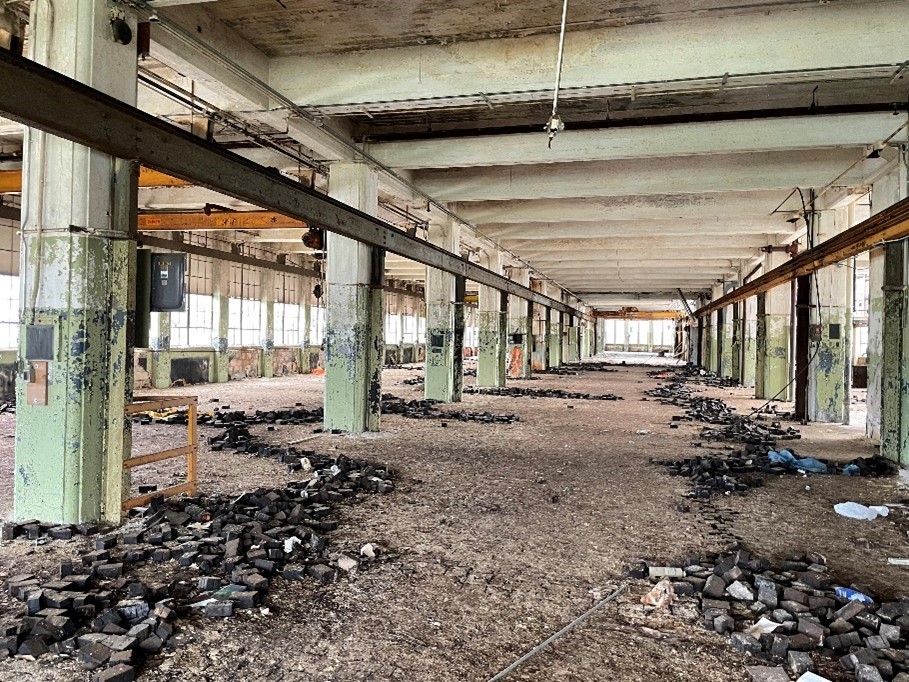Redeveloping brownfields for renewable energy? It’s possible
Brownfield renewable energy is a promising solution for environmental restoration and sustainable power generation. Brownfields, or developed sites that may be contaminated or underused, provide unique opportunities to convert into productive energy hubs. With the proper planning and approach, these sites can become renewable energy projects.
Federal initiatives, such as the BUILD Act, encourage these projects by offering incentives and funding for redevelopment. While brownfields have advantages over untouched land, they also pose challenges related to contamination, worker exposure, permitting and sustainability.
This blog post will explore the benefits, challenges and key considerations involved in turning brownfields into renewable energy sites and how expert guidance can streamline the redevelopment process.
Advantages of brownfields over other underdeveloped sites
Brownfields offer several benefits over other underdeveloped land, making them attractive for redevelopment. One of the primary benefits is the presence of infrastructure. Unlike undeveloped sites, brownfields often have established roads, utilities and electrical connections, reducing the need for costly groundwork. This can accelerate project timelines and lower development costs.
Brownfields often come with financial incentives, such as reduced land costs, tax credits and grant funding. Developers seeking cost-effective solutions may find these incentives highly attractive. Further, many municipalities and government agencies support land redevelopment efforts with regulatory and financial incentives.
The community also plays a role in brownfield projects, as local stakeholders often advocate for redeveloping brownfields to reduce pollution, increase property value and generate economic opportunities.
Challenges of brownfield redevelopment
Despite their potential benefits, brownfields can pose several challenges that must be addressed before a redevelopment project can be successfully implemented. Pollution and contamination are primary concerns that require careful assessment before construction. Developers must ensure that soil and groundwater contamination will not pose new health risks.
Often, site contamination details are undocumented. If a site's history or environmental condition is unknown, a Phase I Environmental Site Assessment (ESA) following ASTM E1527-21 standards will identify past operations and recognized environmental conditions. Typically, a subsequent Phase II ESA is completed to verify and evaluate concentrations of contaminants. A subsequent Phase II ESA typically evaluates contaminant levels, exposure routes and ongoing obligations, guiding plans for a solar or renewable energy redevelopment project.
Securing the permits for brownfield redevelopment is another significant challenge. Developers will need to navigate through multiple regulatory layers, which require approvals from federal, state and municipal agencies. The complexity of compliance and permitting can potentially prolong the redevelopment process, making early coordination with experts and regulatory agencies essential.
Feasibility and scope also need to be considered. Ongoing power requirements and long-term site reuse plans will influence the viability of a brownfield project. Developers must carefully consider the costs against the potential long-term financial benefits of redevelopment.
Exploring the potential of brownfields for renewable energy
When planning to use a brownfield for renewable energy projects, developers should consider project scale, as large sites may require extensive remediation before they can safely support renewable energy infrastructure.
Funding availability, incentive programs and return on investment should be considered. Developers should also explore potential financial assistance through federal, state and local grants used to offset costs and make a renewable energy project more financially feasible.
State and local agencies will also play a role in permitting, utility access and land use regulations. Developers may need approvals for land use entitlements, mitigation, construction, operation and eventual decommissioning. Depending on the project, federal agencies such as the Environmental Protection Agency, U.S. Army Corps of Engineers, Federal Energy Regulatory Commission and U.S. Fish and Wildlife Service may be involved.
Funding and incentives for brownfield renewable energy projects
Several federal and state programs support brownfield redevelopment for renewable energy projects, like the Renewable Electricity Production Tax Credit, the Investment Tax Credit and the Modified Accelerated Cost-Recovery System. These programs can help reduce project costs and encourage investment.
Grant and loan programs from the U.S. Department of Agriculture, the U.S. Department of Energy and the U.S. Department of the Interior may provide additional funding opportunities. Developers may also discover more investment opportunities through Qualified Opportunity Funds, which support renewable energy and energy efficiency projects in designated Opportunity Zones. State-level incentives vary but often include subsidies, grants and tax relief for sustainable energy projects.
How Fehr Graham can help support brownfield redevelopment
Fehr Graham has extensive experience in brownfield redevelopment. Our team of experts can help you overcome the challenges associated with these projects. Our expertise extends across Illinois and surrounding states, where we have played a role in transforming brownfields into renewable energy sites.
Fehr Graham is experienced in brownfield redevelopment, offering guidance to navigate the complexities of site assessments, contamination remediation and project execution. Our team provides customized solutions tailored to each site's unique challenges, ensuring successful redevelopment efforts.
We can support your next project with the following services:
- Environmental Site Assessments.
- Underground Storage Tank assessments.
- Soil and groundwater investigations.
- Remediation planning.
- Grant writing and management.
We're proud of our efforts in Illinois and the surrounding states. Check out our brownfield redevelopment projects and more information here.
Partner with Fehr Graham
At Fehr Graham, we are committed to helping communities remediate and redevelop brownfields while securing financial support for infrastructure upgrades. Our team of licensed engineers and geologists work closely with clients to navigate challenges that come when planning a redevelopment project, ensuring it meets federal, state and local regulations.
To learn about how Fehr Graham can help you with brownfield renewable energy projects, contact us or call 815.394.4700.
 |
Ross Grimes, a Professional Geologist, focuses on remediating properties that have been longtime eyesores. He cares about the environmental future where he lives and works, so dilapidated properties with even the smallest potential are his passion. Ross is dedicated to doing the right thing every day and addresses challenges with innovation, sustainability and common sense. Contact him at This email address is being protected from spambots. You need JavaScript enabled to view it.. |


